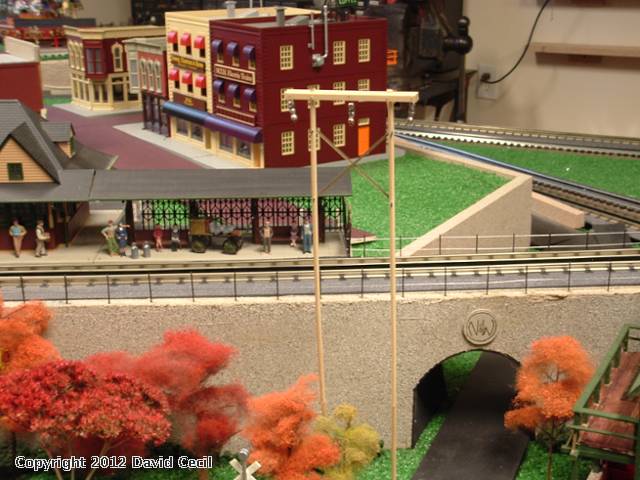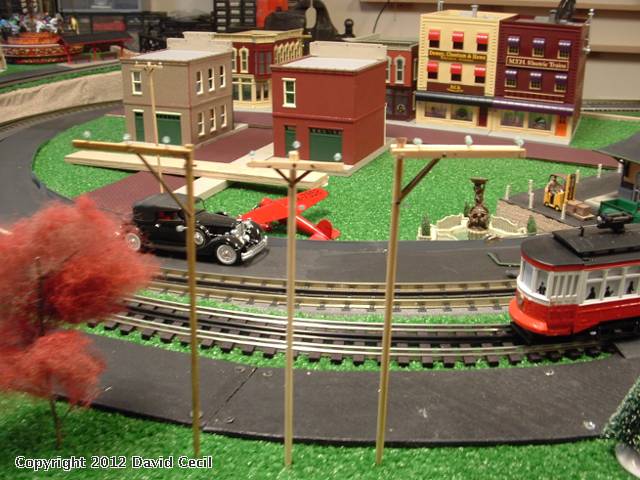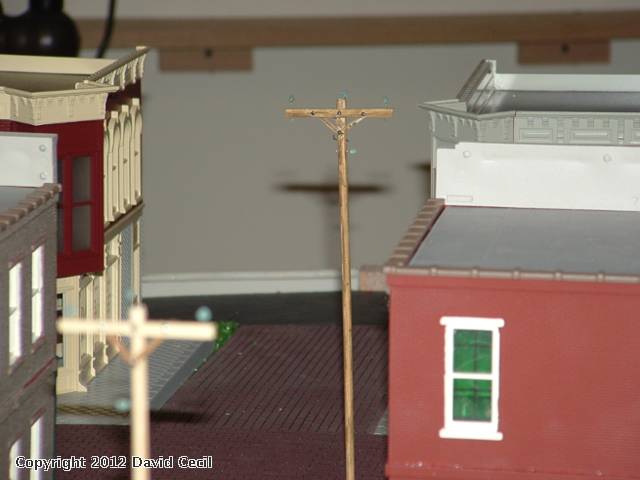I'm trying to figure out where to put the poles. I've already decided on about 75-scale foot spacing (just a hair shy of 19"), but I can't decide where to place them. I have dual tracks (FasTrack) with about 6" track to track.
I know inside the inner track will keep them out of the way and allow for the best access to the track, cars, etc.
Between the tracks, at least, visually looks good to my eye and maybe more prototypical (if that matters).
Outside, while visually the most interesting, primarily due to the increased number of poles and the way they curve around the layout, offers the least access to the tracks.
Did I mention I was planing on also stringing 'wire' between the poles?
The poles are going to be set in holes drilled into the layout board, so it's not likely they're going to get easily knocked over, but track/car access has me a bit concerned.
Any thoughts or experiences that may help me will be appreciated.
Original Post







